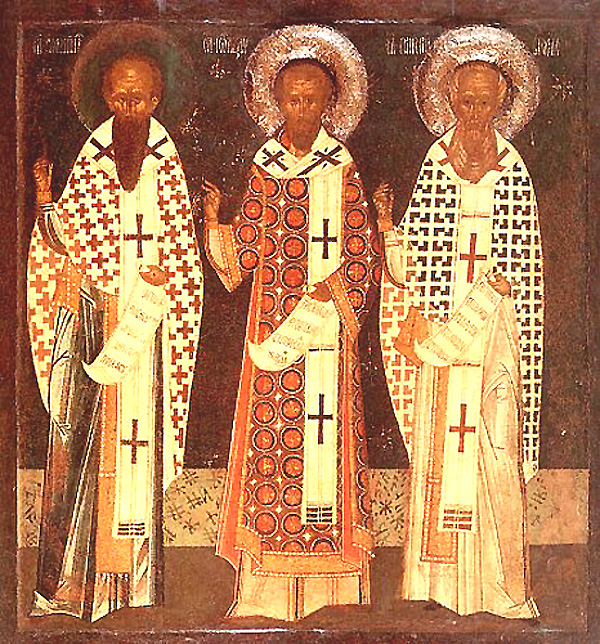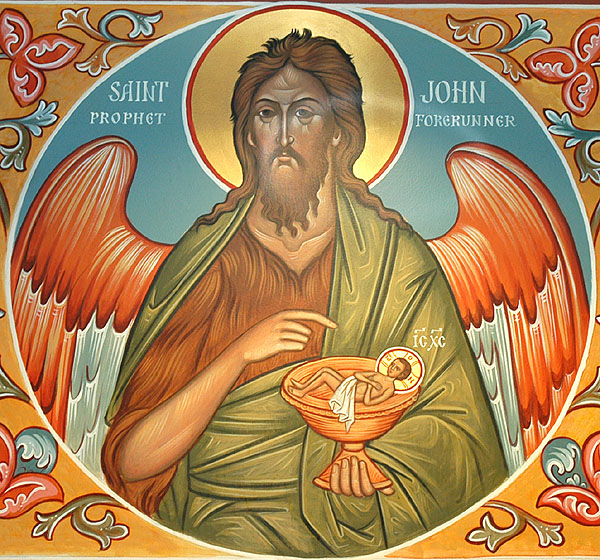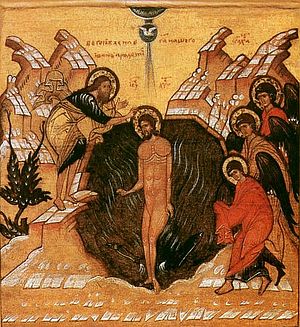Calendar
The Meeting of our Lord and Savior Jesus Christ in the Temple
15. February 2016 - 12:20 Today the Church commemorates an important event in the earthly life of our Lord Jesus Christ (Luke 2:22-40). Forty days after His birth the God-Infant was taken to the Jerusalem Temple, the center of the nation’s religious life. According to the Law of Moses (Lev. 12:2-8), a woman who gave birth to a male child was forbidden to enter the Temple of God for forty days. At the end of this time the mother came to the Temple with the child, to offer a young lamb or pigeon to the Lord as a purification sacrifice. The Most Holy Virgin, the Mother of God, had no need of purification, since she had given birth to the Source of purity and sanctity without defilement. However, she humbly fulfilled the requirements of the Law.
Today the Church commemorates an important event in the earthly life of our Lord Jesus Christ (Luke 2:22-40). Forty days after His birth the God-Infant was taken to the Jerusalem Temple, the center of the nation’s religious life. According to the Law of Moses (Lev. 12:2-8), a woman who gave birth to a male child was forbidden to enter the Temple of God for forty days. At the end of this time the mother came to the Temple with the child, to offer a young lamb or pigeon to the Lord as a purification sacrifice. The Most Holy Virgin, the Mother of God, had no need of purification, since she had given birth to the Source of purity and sanctity without defilement. However, she humbly fulfilled the requirements of the Law.
Synaxis of the Ecumenical Teachers and Hierarchs: Basil the Great, Gregory the Theologian, and John Chrysostom
11. February 2016 - 15:51 Synaxis of the Three Hierarchs: Basil the Great, Gregory the Theologian and John Chrysostom: During the eleventh century, disputes raged in Constantinople about which of the three hierarchs was the greatest. Some preferred St Basil (January 1), others honored St Gregory the Theologian (January 25), while a third group exalted St John Chrysostom (November 13).
Synaxis of the Three Hierarchs: Basil the Great, Gregory the Theologian and John Chrysostom: During the eleventh century, disputes raged in Constantinople about which of the three hierarchs was the greatest. Some preferred St Basil (January 1), others honored St Gregory the Theologian (January 25), while a third group exalted St John Chrysostom (November 13).
Dissension among Christians increased. Some called themselves Basilians, others referred to themselves as Gregorians, and others as Johnites.
By the will of God, the three hierarchs appeared to St John the Bishop of Euchaita (June 14) in the year 1084, and said that they were equal before God. “There are no divisions among us, and no opposition to one another.”
St Athanasius the Great the Patriarch of Alexandria
31. January 2016 - 15:58 Saint Athanasius the Great, Archbishop of Alexandria, was a great Father of the Church and a pillar of Orthodoxy. He was born around the year 297 in the city of Alexandria into a family of pious Christians. He received a fine secular education, but he acquired more knowledge by diligent study of the Holy Scripture. In his childhood, the future hierarch Athanasius became known to St Alexander the Patriarch of Alexandria (May 29). A group of children, which included Athanasius, were playing at the seashore. The Christian children decided to baptize their pagan playmates.
Saint Athanasius the Great, Archbishop of Alexandria, was a great Father of the Church and a pillar of Orthodoxy. He was born around the year 297 in the city of Alexandria into a family of pious Christians. He received a fine secular education, but he acquired more knowledge by diligent study of the Holy Scripture. In his childhood, the future hierarch Athanasius became known to St Alexander the Patriarch of Alexandria (May 29). A group of children, which included Athanasius, were playing at the seashore. The Christian children decided to baptize their pagan playmates.
The young Athanasius, whom the children designated as “bishop”, performed the Baptism, precisely repeating the words he heard in church during this sacrament. Patriarch Alexander observed all this from a window. He then commanded that the children and their parents be brought to him. He conversed with them for a long while, and determined that the Baptism performed by the children was done according to the Church order. He acknowledged the Baptism as real and sealed it with the sacrament of Chrismation. From this moment, the Patriarch looked after the spiritual upbringing of Athanasius and in time brought him into the clergy, at first as a reader, and then he ordained him as a deacon.
Saint Sava I, First Archbishop of Serbia
26. January 2016 - 22:30 Saint Sava, First Archbishop of Serbia, in the world Rostislav (Rastko), was a son of the Serbian king Stephen Nemanya and Anna, daughter of the Byzantine Emperor Romanus. From his early years he fervently attended church services and had a special love for icons.
Saint Sava, First Archbishop of Serbia, in the world Rostislav (Rastko), was a son of the Serbian king Stephen Nemanya and Anna, daughter of the Byzantine Emperor Romanus. From his early years he fervently attended church services and had a special love for icons.
At seventeen years of age, Rostislav met a monk from Mount Athos, secretly left his father’s house and set off for the St Panteleimon monastery. (By divine Providence in 1169, the year of the saint’s birth, the ancient monastery of the Great Martyr and healer Panteleimon was given to Russian monks.)
Synaxis of the Holy Glorious Prophet, Forerunner and Baptist John
18. January 2016 - 14:13 In the Orthodox Church it is customary, on the day following the Great Feasts of the Lord and the Mother of God, to remember those saints who participated directly in the sacred event. So, on the day following the Theophany of the Lord, the Church honors the one who participated directly in the Baptism of Christ, placing his own hand upon the head of the Savior.
In the Orthodox Church it is customary, on the day following the Great Feasts of the Lord and the Mother of God, to remember those saints who participated directly in the sacred event. So, on the day following the Theophany of the Lord, the Church honors the one who participated directly in the Baptism of Christ, placing his own hand upon the head of the Savior.
St John, the holy Forerunner and Baptist of the Lord, whom the Lord called the greatest of the prophets, concludes the history of the Old Testament and opens the era of the New Testament. The holy Prophet John bore witness to the Only-Begotten Son of God, incarnate in the flesh. St John was accounted worthy to baptize Him in the waters of the Jordan, and he was a witness of the Theophany of the Most Holy Trinity on the day of the Savior’s Baptism.
Homily on the Baptism of the Lord
18. January 2016 - 14:10 For as many of you as have been baptized into Christ have put on Christ (Gal. 3:27)
For as many of you as have been baptized into Christ have put on Christ (Gal. 3:27)
Except a man be born again, he cannot see the kingdom of God… Except a man be born of water and of the Spirit, he cannot enter into the kingdom of God (Jn. 3:3, 5)
According to his mercy he saved us, by the washing of regeneration,
and renewing of the Holy Ghost (Titus 3:5).
A new, bright feast has arrived; the day of Light, the day of the most glorious, mysterious Baptism of the Lord, to Whom we are obligated for our renewal or rebirth, enlightenment, restoration, and adoption by the heavenly Father from Whom humankind was estranged for several thousand years by the defilement of sin.

